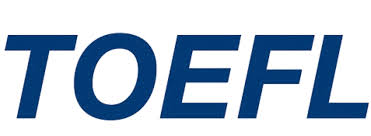
Australia
Australia is the largest island and the smallest continent on the earth. In land area, Australia is the 6th largest nation after Russia, Canada, China, United States of America and Brazil..
Australia, officially the Commonwealth of Australia, is a highly developed country in the Southern Hemisphere comprising the mainland of the Australian continent, the island of Tasmania and numerous smaller islands in the Indian and Pacific Oceans.
It is divided into 6 states and 2 territories.
- NSW
- Victoria
- Queensland
- Northern Territory
- W.A
- Tasmania
Territories
- (7) Australian Capital Territory
- (8) South Australia.
Some Facts
CAPITAL: Canberra
CURRENCY: Australian Dollar ($) (AUD)
LANGUAGE: Although Australia has no official language, English is so entrenched that it has become the de facto national language.
TIME DIFFERENCE: 4 hours 30 minutes ahead IST.
CALLING CODE: +61
Weather
The climate of Australia varies widely, but by far the largest part of Australia is desert or semi-arid – 40% of the landmass is covered by sand dunes. Only the south-east and south-west corners have a temperate climate and moderately fertile soil. The northern part of the country has a tropical climate, varied between tropical rainforests, grasslands, part desert.
The rainfall patterns across Australia are highly seasonal.
In Australia, snow can fall in the mountains of Victoria, Australian Capital Territory, New South Wales and Tasmania. There is a regular snow season in several areas which have seasonal ski tourism industries. Sometimes snow has even been reported in the mountains of South Australia, Western Australia and Queensland though this is very rare.
Transport
Roads
Australia has the second highest level of car ownership in the world. It has three to four times more roads per capital than Europe and seven to nine times more than Asia. Australia also has the third highest per capital rate of fuel consumption in the world. Perth, Adelaide and Brisbane are rated among the most car-dependent cities in the world, with Sydney and Melbourne close behind. Furthermore, the distance travelled by car (or similar vehicle) in Australia is among the highest in the world, being exceeded by USA and Canada.
The majority of road tunnels in Australia have been constructed since the 1990s to relieve traffic congestion in metropolitan areas, or to cross significant watercourses.
Other transport modes include:
- Rail
- Intra-state and city rail services
- Metro
- Mining railways
- Sea
Major Regions/ Cities
Following are the popular cities in Australia in each region.
- New South Wales (Sydney, Armidale, Blue Mountains, Liverpool, Newcastle, Penrith, Paramatta, Waga Waga and Wollongong)
- Northern Territory (Darwin and Palmerstone)
- Queensland (Brisbane, Cairns, Gold Coast, Toowoomba and Townsville)
- South Australia (Adelaide)
- Tasmania (Greater Hobart which is also the Capital and which consists of the conurbation of the City of Clarence, City of Hobart, and the City of Glenorchy)
- Victoria (Melbourne, Ballarat, Bendigo, Warrnambool and Hamilton)
- Western Australia (Perth, Albany, Armadale, Joondalup)
Major Economy
The economy of Australia is a developed, modern market economy with a GDP of approximately $1 trillion USD. In 2009, it was the 13th largest national economy by nominal GDP and the 18th largest measured by PPP adjusted GDP, representing about 1.7% of the World economy. Australia was also ranked the 21st largest importer and 23rd largest exporter.
The Australian economy is dominated by its service sector, representing 68% of Australian GDP. The agricultural and mining sectors (10% of GDP combined) account for 57% of the nation’s exports.
The Australian Securities Exchange is the largest stock exchange in Australia.
Established Industries:
Main Industries:
- Service
- Agriculture
- Transportation equipment
- Chemicals
- Education
- Processed and unprocessed minerals
- Food products
- Wood and paper products
- Fish products
- Petroleum and natural gas
- Steel
- Mining
Education System
Australia has divided the various courses into the subclasses:-
INTAKE:
University / Colleges :
Australian institutions have major intake in the month of February/ Early March each year.
July/ August intake is also a very big intake with few courses in the specialized programs not being offered at this point of time.
Some courses also start in the month of May, October and November.
Ranking
There are no official rankings of Australian institutions. There are some commercial publications available that compare achievements of universities and institutions in meeting certain criteria such as use of technology or student support services.
All of Australia’s education and training institutions offer high quality, internationally relevant courses because Australian Government legislation requires them to be registered and meet quality assurance measures.
Part time work during studies
Students are allowed to work part time 20 hours per week and full time during holidays while studying the course.
Work opportunities after studies
There some popular categories wherein students mostly for apply for their further stay in Australia-
- Professionals and other Skilled Migrants
This program, also known as the General Skilled Migration program, is for people who are not sponsored by an employer and who have skills in particular occupations required in Australia. Applicants must be over 18 and under 45 years of age, with good English language ability, and recent skilled work experience or a recently completed eligible Australian qualification.There is a range of visa options under the General Skilled Migration program for skilled workers who want to live in Australia and who do not have an employer sponsoring them. These include options for skilled people applying as an independent migrant as well as those sponsored by a relative, or nominated by a State or Territory government.
IndependentIndependent migrants have the least number of restrictions placed on them and this is the preferred option for eligible applicants who do not have an employer to sponsor them. Assess your eligibility for the independent visas before you continue.
Sponsored
If you are sponsored by an eligible relative, please note that there are a number of obligations that must be met by your sponsor.
Regional Initiatives
The Australian Government is working closely with state, territory and local governments, and regional authorities to provide regional migration programs that support regional development and help supply the skill needs of regional employers.
These programs are designed to address the special circumstances of rural and regional Australia.
They are employer-friendly, flexible and include concessions for regional employers.
The programmes aim to attract young, skilled, English speaking migrants to areas of Australia where they are most needed. Generally, skilled migrants are under 45 years of age, have functional English, diploma level qualifications or above and relevant work experience.
Visa Requirement
- Good academics
- IELTS Score as suggested in the English language requirement
- Finances to support education as per the living expenses guideline given under living expenses
- Genuine Intentions to Study in Australia
Following is a guideline for acceptable financial requirement of the Australian High Commission. Kindly Understand that these requirements may change and updates must be discussed with the Espire office before applying for the visa.
- Saving Account 6 months old
- Fixed Deposits 6 months old
Post Office savings:
- Term Deposits 6 months old
- Recurring Deposit 3 years old (Acceptable amount minimum Balance in current 6 months)
- MIS 1 year old
Others:
- PPF 4 year old
- PF/ GPF/ EPF/ CPF Parents
Loans
- Education Loan (Loan Disbursement letter id mandatory)
At present Australian applications are processed under two categories:
- E-lodgment (Electronic Lodgement)
- PVA (Paper Visa Lodgement)
Visa processing time for visa varies from 4 – 12 working weeks.
English Requirement
| EXAM | DIPLOMA | BACHELORS | GRAD DIP | PG DIP/MASTER |
| IELTS | 5.5-6 | 0 6.0- 6.5 | 6.0 (WRITING-6.0) |
6.5 -7.0 (WRITING-6.0) Some institutions may accept IELTS 6.0 band as well. |
| TOEFL (COMPUTER BASED) | 213-233 | 233-247 | 233 | 250 |
For some of the MBA’s/Communication/Nursing and Teaching programs an IELTS of 7.0 bands is required
This is just a guideline. English requirements may change as per course/University.
- Please note that the above %s is general requirements and you must refer the brochure/website for exact entry requirements before sending the applications.
English requirement
IELTS is the only acceptable test for checking the English language proficiency of student by the Australian High Commission.
IELTS is a mandatory requirement for the processing of visa application. Institutions may accept TOEFL score admission purposes however student must have an IELTS score before applying for visa.
Students can also go to Australia for studying an English course called ELICOS in case they are short of .5 or 1 band from the required score.
| In each visa category student must have required language capability from India before enrolling in a Australia as per the following guideline of AHC.8.0 | 110 | 79 | 80 |
| 8.5 | 115 | 83 | 87 |
| 9.0 | 118 | 86 | 93 |
Fee Structure
Under Graduate Studies
Universities 16,000.00 – 27,000.00 AUD$ per year
Colleges 13,000.00 – 17,000.00 AUD$ per year
Post Graduate Studies
Universities Bt. 17,000 .00 – 28, 000.00 AUD$ per year
Colleges Bt. 15, 000.00 – 21,000.00 AUD $ per year
Living Expenses as per the Australia High Commission visa guidelines:
Living (Applicant) – 18,000.00 AUD per year
Living (Spouse) – 6,300 .00 AUD per year
Living (Child I) – 3,600.00 AUD per year
Living (Child II) – 2,700.00 AUD per year
Further if the child turns 5 year in Australia, the schooling funds are needed for the stay in Australia.
Academic Requirement
Entry Requirement
| Qualification | MINIMUM % required |
| Certificate | 50 – 60 % in class XII |
| Diploma | 60 – 70 % in class XII |
| Bachelor | 70- 75 % and above in class XII |
| Graduate Diploma | 50 – 55 % in Bachelor degree, high second division or first division for engineering courses |
| Post Graduate Diploma | 55 – 60 % in Bachelor degree in the same specialization or a PG Diploma/Masters from a recognized University or relevant work experience |
| Masters degree | Higher second division, preferably 60% and above in Bachelor degree in the same field + a PG Diploma/Masters from a recognized University/ or relevant work experience |






